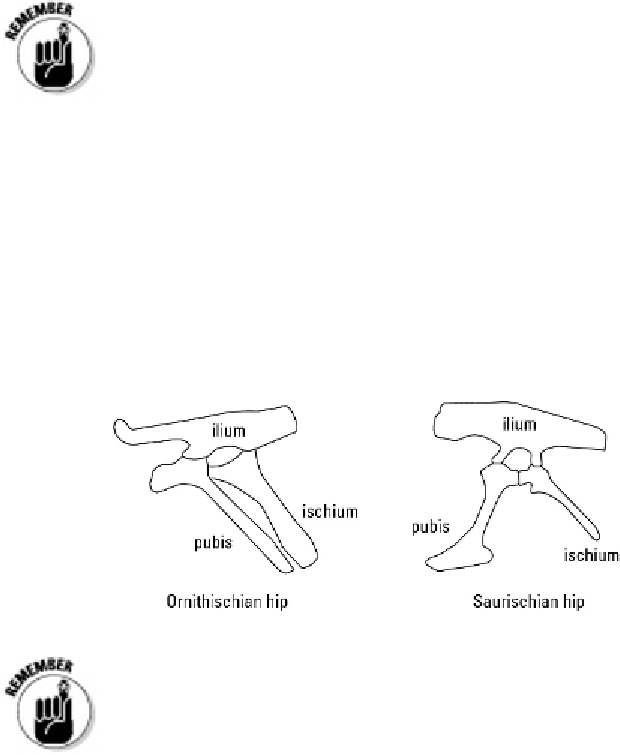Geology Reference
In-Depth Information
Climbing the Dinosaur Family Tree
Clearly the most dominant life forms on the Mesozoic earth were the large (and small)
land-dwelling reptiles: the dinosaurs. Movies often portray dinosaurs as giant, scary
monsters. In fact, dinosaurs were widely variable in their size, eating habits, and living
patterns. Consider mammals today; while a tiger may be a large, ferocious predator, the
squirrel in your backyard isn't so frightening. During the Mesozoic, dinosaurs filled both
these roles — and everything in between.
The dinosaur family tree has two main branches:
ornithischia
and
saurischia.
The division in the branches is based on the skeletal structure of the pelvic bones
(the ilium, ischium, and pubis). In this section I describe the identifying character-
istics of these two main groups, as well as particular dinosaurs and where they fit
into the dinosaur family tree.
Ornithischian dinosaurs
Dinosaurs on the
ornithischia
branch are described as having bird-like pelvic bone struc-
ture, which is illustrated on the left in Figure 20-6.
Figure 20-6:
Bird-
like and lizard-like
hip structure of di-
nosaurs.
The ornithischians include dinosaurs that were
bipedal,
or walking on two
legs, as well as
quadrupedal,
walking on four legs. All the ornithischian dinosaurs
were vegetarians, or
herbivores,
eating only plants. The ornithsichian group in-
cludes the following dinosaurs, which are illustrated in Figure 20-7:



